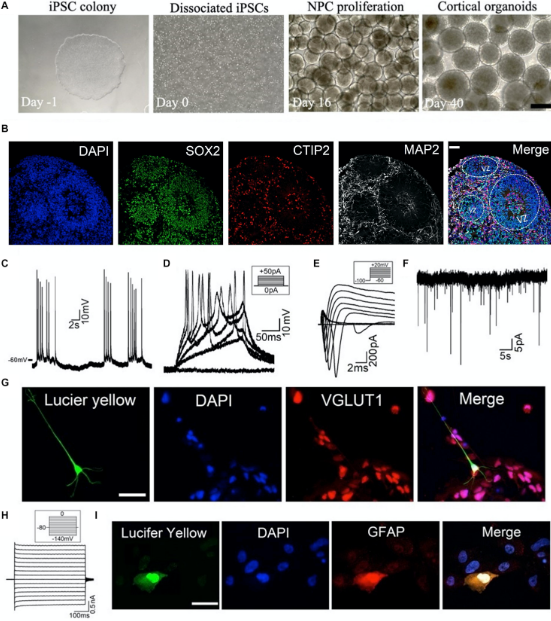
Human cortical organoids (HCOs) are three-dimensional structures of neuroepithelial cells derived from human pluripotent stem cells (hPSCs). They are grown in vitro and can mimic certain aspects of the embryonic and the early postnatal human brain. HCOs are a promising tool to study brain development, disease modeling, and drug screening. However, their use as a model of human brain development and disease has been limited by their lack of maturation and circuit integration.
In recent years, there have been significant advances in transplantation techniques as well as the use of bioengineering approaches to enhance the maturation of HCOs. Transplantation of HCOs into the brains of rodents has proven to be an effective approach to studying their integration into the host brain and their ability to form functional connections with the host brain.
In addition, bioengineering techniques such as the use of microfluidics and extracellular matrix hydrogels can be used to create an in vitro environment that mimics the in vivo environment and promote the maturation of HCOs.
These advances are enabling researchers to better study the maturation and circuit integration of HCOs. This is important as it paves the way for the development of new therapies for neurological diseases and disorders.
Furthermore, this research may also help to uncover novel strategies to improve the development and maturation of HCOs in vitro, which could lead to a new generation of drug discovery platforms. Ultimately, this research will help to further our understanding of the human brain and its development, as well as create new avenues for therapies and treatments of neurological diseases and disorders.
Maturation and Circuit Integration of Transplanted Human Cortical Organoids Anatomy:
The anatomy of HCOs is complex, consisting of a variety of cell types, including neurons, glia, and astrocytes. The neurons are organized into cortical layers, which are arranged in a radial orientation. Additionally, the neurons are connected by synapses, which are the primary sites of communication between neurons. The astrocytes, on the other hand, are not part of the synapse, but instead, provide support and protection for the neurons.
Maturation and Circuit Integration of Transplanted Human Cortical Organoids Growth and Maturation:
A human cortical organoid is a stem cell-derived artificial brain modeled after the human brain. The organoids are grown in a lab using a variety of methods and are currently in experimentation.
Human cortical organoids (HCOs) are three-dimensional structures of neuroepithelial cells derived from human pluripotent stem cells. The growth and maturation of these HCOs are key areas of research, as they provide an invaluable tool to study brain development, disease modeling, and drug screening.
The maturation of HCOs is a complex process and is largely dependent on the interaction of its components. As the cells differentiate, they form a variety of cell types, including neurons, glia, and astrocytes. The neurons are connected by a vast network of synapses, which are the primary sites of communication between neurons. The astrocytes, on the other hand, provide support and protection for the neurons.
In addition to the cellular components, the extracellular environment also plays a critical role in the maturation of HCOs. The extracellular matrix, or ECM, is a complex network of proteins, carbohydrates, and other molecules that surrounds the cells and provides structural and biochemical guidance for cell growth and differentiation.
Integrated circuits IC model: 66AK2G12ABYA100E,66AK2G12ABYA100,66AK2G12ABY60,66AK2G12ABY100,66AK2E05XABDA4,66AK2E05XABDA25,66AK2E05XABD4,66AK2E05XABD25, DAC38RF86IAAVR.
Regeneration:
Regeneration refers to the regrowth of organs and tissues that have been damaged or lost due to injury or disease. The ability of organisms to regenerate varies widely, from simple organisms such as planarians, which can regenerate entire bodies from a single cell, to complex organisms such as humans, which can only regenerate certain tissues and organs under certain conditions.
The process of regeneration involves a variety of cellular processes, such as cell division, cell migration, and cell differentiation. These processes are regulated by a complex array of molecules and proteins, as well as external factors such as temperature, pH, and substrate availability.
The regeneration of human tissues and organs is a major area of research and has the potential to revolutionize the treatment of many diseases and injuries. For example, the development of stem cell therapies and tissue engineering techniques has the potential to enable the regeneration of a variety of tissues and organs. In addition, the study of regenerative processes in other organisms has provided researchers with valuable insight into how to promote regeneration in humans. Ultimately, this research has the potential to lead to new treatments and therapies for a variety of diseases and injuries.
Conclusion:
This article provides an overview of how to maturation and integrate cortical organoids into a brain system. This involves the transplantation of HCOs into the brains of rodents and the use of bioengineering techniques to create an in vitro environment that mimics the in vivo environment and promotes the maturation of HCOs. In addition, this article also discussed the potential of regenerative processes in humans and the impact they may have on the treatment of a variety of diseases and injuries.





 2022-12-17
2022-12-17 


